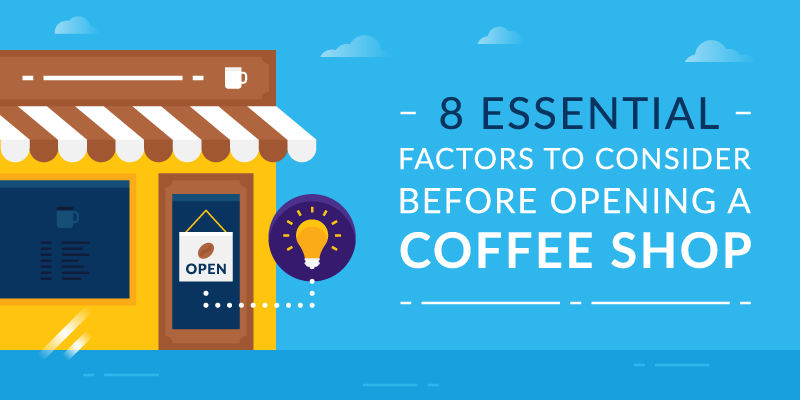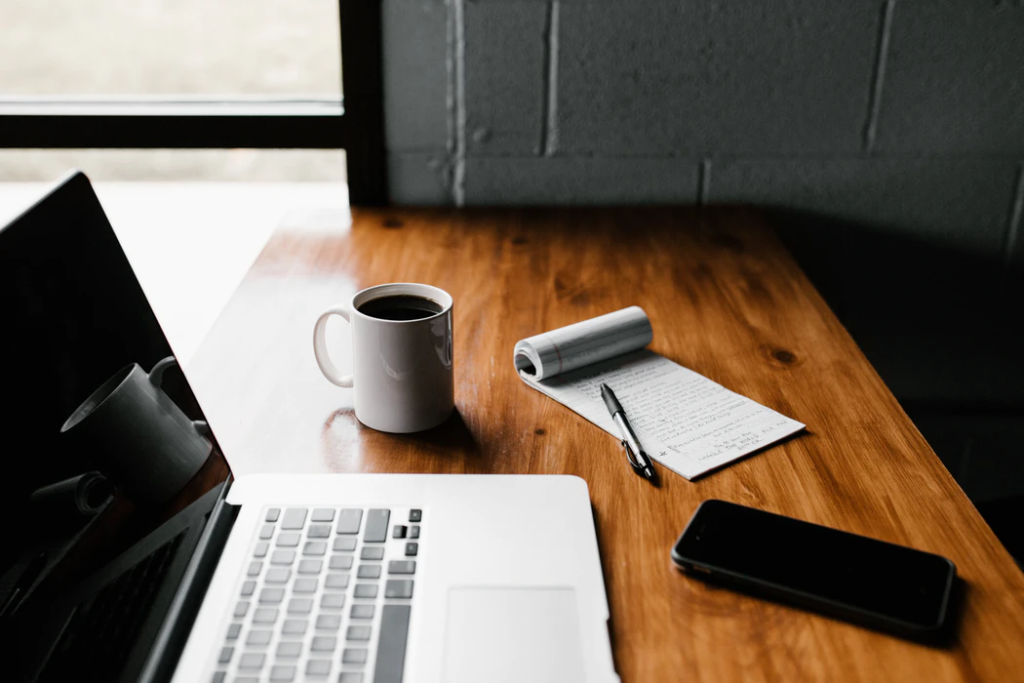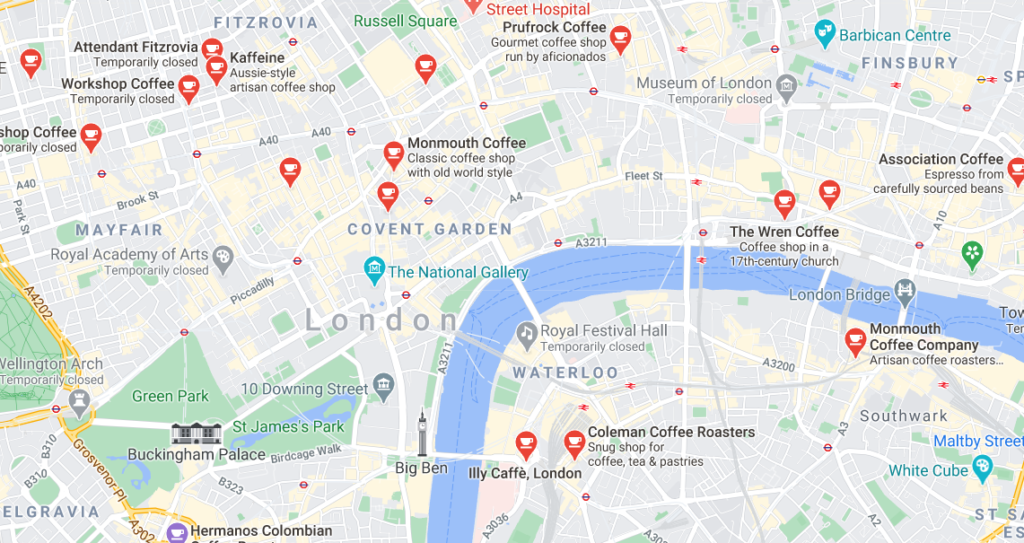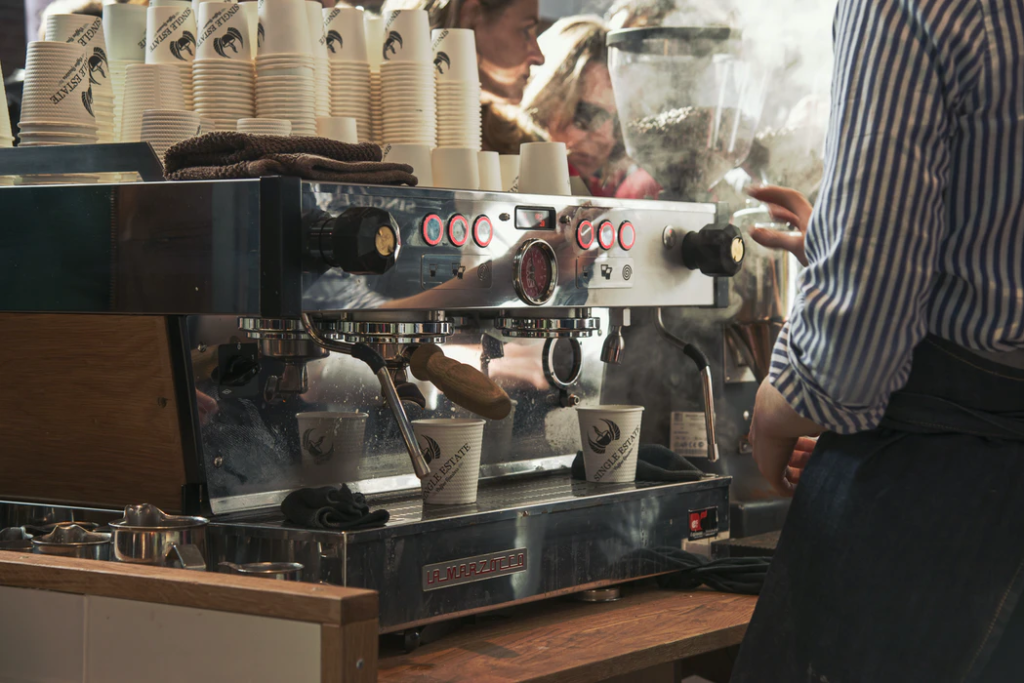
Opening a coffee shop is a challenge if you’re new to running a business. But it’s also a great opportunity. In the U.S. alone, annual sales in the industry come in at around $45 billion, and plenty of people start successful coffee businesses every year.
But, before you think about industry domination, you need to open your first coffee shop. That’s what the tips in this article will help you do.
Table of Contents
8 Top Tips for Opening a Coffee Shop
Consider Your Options
First, consider the type of coffee shop you want to open. You have three main options, each with significant plus points and drawbacks.
You can:
- Open a franchise store.
- Buy an existing coffee shop.
- Start your own business from scratch.
Here is a look at each option in further detail:
Open a Coffee Shop Franchise
Opening a franchise is one of the easiest ways to start a coffee shop as most significant business decisions are made for you. You won’t have to worry about product selection, suppliers, or pricing. Just do what the company already knows will work.
You’ll also benefit from an existing brand name. You’ll have a ready-made customer base of people who like the brand and will be happy to buy from you. Marketing is essentially taken care of.
The company behind the franchise will often provide training on how to run your coffee shop successfully. It may also provide standard operating procedures and best practices.

All the above points make opening a franchise a good option for those without experience running a coffee shop.
The downside is that there is little way to make your business stand out. You’ll also have to pay fees to the franchise owner. Much of this money is invested in the franchise brand and therefore helps you in the long run.
It typically costs between $20,000 and $1 million to open a franchise and some of the most popular brands have strict requirements.
If you want to know more about how to open a coffee shop franchise, check out this guide from StartMyCoffeeShop. Or Google the coffee shop brand you are interested in.
Buy an Existing Coffee Shop
Buying an existing coffee shop is an excellent option if you don’t want to set up a new business. The equipment and menu will already be in place, and you’ll have an existing customer base.
The downside is that buying a business can be expensive. The amount you pay will reflect the coffee shop’s assets (equipment, property, etc.) as well as its annual turnover. If the business has steady or growing profits, expect to pay a lot.
The alternative is to buy a coffee shop in a less financially stable position. You’ll then work to turn it around. This is a good option if you can identify a fixable reason why the business isn’t performing. Consider your expertise and reflect on whether you are likely to succeed.
Buying a business is a complicated process, and you should spend time on due diligence. Factor in any legal or accounting fees you’ll have to pay during this process.
Start a Coffee Shop From Scratch
Of all the options, starting your own coffee shop involves the most work—especially during the early stages. But if you have coffee shop experience or a great idea, you can make it work. You’ll also have the most freedom to build your shop according to your vision.
This method can also be the most profitable. You won’t have to pay franchise fees or a multiple on an existing company’s profit.
Create a Business Plan

The next step is to write a coffee shop business plan. This is especially important if you plan to create one from scratch.
Consider the following sections in your business plan:
- Executive Summary: A short overview of your business with all the most important details. Similar to an elevator pitch.
- Company Overview: Practical business details such as structure, owners, and startup costs.
- Market Analysis: Research the local coffee shop market, including competitors and trends. Outline why your business will succeed.
- Customer Analysis: Who lives, works, or visits the area where your business is located?
- Marketing Plan: Explain how you will attract customers to your coffee shop.
- Operating Plan: Plan the day-to-day running of your business. E.g., opening hours, prices, and employees.
- Management Team: Define who will run your coffee shop. Include their experience and credentials.
- Financial Plan: Analyze how your business will be financially successful. Write about operating and startup costs, funding, cash flow, and expected revenue.
Check out this article for more information about writing a coffee shop business plan.
Explore Funding Options

Your budget will define many of the decisions you make when starting a coffee shop. So you’ll need to determine how much you have to spend early on.
You have two main options.
The first is to self-fund your business. This means using your savings to pay for the opening of your shop. If you’re teaming up with other people to start the company, you can all put up a predefined amount of cash.
The second is to acquire a business loan from a bank. A bank will want to see that you have a solid business plan that is likely to succeed. It may also require you to provide a personal guarantee.
Exploring funding options is a crucial step, and one often overlooked aspect is selecting the right banking partner for your business savings and operations. A review of Customers Bank, especially considering their High Yield Savings Account by Raisin, could provide valuable insights into a banking option that offers competitive APY and no monthly fees, potentially supporting the financial stability of your new coffee shop.
Outside of these options, you could:
- Loan money from family or friends.
- Look to outside investors.
- Try crowdfunding.
- Use credit cards.
Find a Great Location

The right location can make or break your coffee shop business.
Start by choosing some general areas that you are interested in opening in. Think about the type of people who visit the location and the other business in the vicinity. Use a tool like Google Maps to get an in-depth view of an area.
The competition from other coffee shops is a significant factor.
Don’t reject an area because there are other coffee shops nearby, as this can be a sign there is a demand for coffee. Likewise, areas without an existing successful coffee shop could be great opportunities, or they could simply be places without a demand.
If you choose to open a coffee shop in an area with high competition, think carefully about whether the location can support another business. Also, consider how to make your coffee shop stand out.
Once you’ve found an area you like, you need to find a specific unit that will house your coffee business.
An ideal spot is typically:
- Highly visible.
- Has passing footfall.
- Fits into your budget.
Also, consider what the building was previously used for. If you move into a unit that a coffee shop or restaurant previously used, you may be able to save money by using the existing features.
A unit that was previously used as offices, a home, or retail may require a complete (and expensive) refit.
Parking, access to public transport, and space for a drive-thru are also essential considerations.
For many aspiring business owners, the cost of rent will be the make or break factor when choosing a location. Look at your business plan to decide if your expected revenue lets you afford the unit you want. If you are unsure, you may be better off finding another spot or adjusting your business plan.
Remember that some areas tend to have far higher prices than others. Searching for units in another part of your city may open up many potential options within your price range.
Design a Floor Plan
When searching for a location, make sure you consider your floor plan. Write a list of everything you need to include in your coffee shop and consider how this will fit into the venue.
You’ll need:
- A counter where people can make orders.
- A place to prepare drinks and food.
- Space for equipment like fridges, espresso machines, grinders, ovens, etc.
- Enough seating to stay profitable.
- A place for washing up.
- A customer bathroom.
- Places for queuing.
- A coffee pickup spot.
- Space for interior design features.
- Storage.
During this stage, visit other coffee businesses in similar sized locations to the one you want. This will show you how other venues solve spacing issues. Consider whether you can identify any problems and, if so, what a better solution would be.
Sketch your designs on paper. Or use a tool like Roomsketcher or SmartDraw to help. The plan below comes from the latter tool.

Differentiate Your Product
If you want to open a coffee shop, you probably have a good idea of the type of product you wish to serve. Now is the time to clearly define your offering.
Consider how you will stand out from nearby competitors.
This can be hard to do with coffee alone, as most places serve the standard espresso-based drinks people expect. But there are still things you can do.
- Roast your own high-quality beans.
- Use speciality beans from other roasters.
- Focus on a type of coffee others in the area don’t offer—for example, hand drip or Viennese styles.
- Differentiate yourself via the items you serve alongside the coffee. E.g., cakes, pastries, sandwiches.
- Provide table service.
For some coffee shops, the defining feature may not be the food and drink it sells. Instead, it could be the interior design, being an excellent place to work or study, the prices, or that it targets an underserved customer segment.
At this point, consider what else you will include on your menu.
While some coffee shops prefer a stripped-down core offering, others include a bit of everything to attract a broader customer base. This may be essential if you are moving into a large space that needs to make a lot of sales to stay profitable.
Consider What Equipment you Need

After renting or buying a location and then furnishing it, the third most costly expense when starting a coffee shop is equipment.
These expenses can vary wildly depending on the size of your location and what you plan to offer.
A small speciality hand-drip coffee business won’t require much beyond grinders, cups, and filters. But a large coffee shop that plans to sell food will need commercial-scale espresso machines, cooking equipment, and more.
Here are some factors to consider:
Espresso Machine
Espresso-based drinks make up the majority of the menu for many coffee shops.
High-end espresso machines can be costly, especially if you require a large one. To cut costs, you may be able to buy a machine second hand or even lease one from a leasing company.
When choosing a machine, be sure to get one that can handle the number of drinks you expect to make in a day.
Grinder
Coffee shops that plan to focus on high-quality coffee will benefit from a grinder. This ensures the coffee grounds are as fresh as possible.
A commercial grinder will quickly grind your beans to the right size, ensuring you can quickly make coffee.
Other Drinks Equipment
Look at your drinks menu and see what else you need. You may need a drip coffee machine if you plan to sell this type of coffee. Or you may need blenders if you plan to offer smoothies or frappuccino-style drinks.
Kitchen Equipment
The kitchen equipment you need will vary dramatically depending on what you plan to offer. While a fridge is essential for most, some venues will also require ovens, dishwashers, toasters, freezers, and more.
POS System

Your Point of Sale system is what you use to process sales. A simple one allows you to process transactions via card or cash, while a more complex one can provide in-depth sales analytics.
For example, many POS providers offer scalable systems. The basic packages are essentially a card reader app for your mobile device. The most expensive options include employee and customer-facing terminals, supporting software with booking functionality and the ability to take a wide range of different payment types.
Essential Small Items
There are many small purchases you’ll need to make when you start a coffee shop. The cost of items like cutlery, plates, mugs, cups, chairs, tables, and more will soon add up. Make sure to add these to your budget.
Added Extras
Many coffee businesses require extra equipment not mentioned on this list. Consider whether you need security systems, speakers for music, advertising boards, automated payment terminals for drive-thru sales, or speciality equipment related to products you want to offer.
Start Marketing Early
Good coffee shop marketing can help push your business to success. Starting early will give you a big head start.
Most new businesses have a limited budget for promotion. Because of this, social media and other free or low-cost online marketing methods are popular choices when starting a coffee shop.
Here are some quick and easy marketing activities:
Claim Your Google My Business Profile

This is a free profile that will help your business show up on Google Search and Maps when people are looking for coffee in your area. You’re probably familiar with the feature. If not, the image above shows how a Google my Business profile looks in search.
Fill out your business name, address, opening hours, and contact details. You can later add images of your food and ask for customer reviews.
Create a Facebook Business Profile for Your Coffee Shop Business
Complete your free Facebook business profile to help customers find you when searching on the platform. Add your location, opening hours, contact details, and business type. Like with your Google profile, you can also add images and request reviews.
Consider setting up auto-responses on Messenger so people can easily access more information about your restaurant. A Facebook page shop can be an excellent way to promote your product if you can generate a large audience.
Set Up Your Instagram Profile
Instagram is a really useful tool for coffee shop marketing. Create your profile and then start to build your following. You can do this before you launch your business by adding teaser images with relevant hashtags. Once you’re open, Instagram is an excellent way to share photos of your business and communicate with your customer base.
Put Up Posters in Your Window
This is another super cheap but effective form of promotion to use before you open a coffee shop. Put up a poster or sign in your window a few weeks before you open. Include your business name and an open date to build excitement. Including the URL of your Instagram account so people can easily find and follow you.
Consider Using an App

An app is a cost-effective marketing tool that can enable many features useful to coffee shops. You can use an app to:
- Provide an ‘order ahead’ service like Starbucks.
- Process payments for takeaway or curbside pickup.
- Run a loyalty scheme.
- Give away coupons to encourage repeat custom.
- Communicate with customers.
These features can help you build customer loyalty and increase the options you have for generating revenue.
Starbucks is one example of a coffee shop with a successful app. But plenty of other coffee shops use one to their advantage.
Here are some excellent coffee shop app examples you can use for inspiration.
Opening a Coffee Shop is a Big Challenge
Opening a coffee shop is an exciting time in your life. To be successful, you need to put in place a good plan.
Getting the practical things right, like choosing a great location or creating an excellent menu, will set you up for success. A good marketing plan that builds your brand and customer relationships will also help.
If you want more information, check out this article about how to open a coffee shop.
Last Updated on March 6, 2024 by Ian Naylor

0 thoughts on “8 Essential Tips to Consider Before Opening a Coffee Shop”